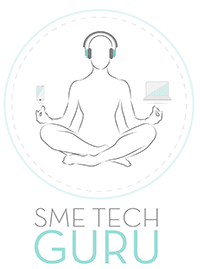By Cuan Humphries, Digital Strategy Architect at League Digital
The decision to work remotely was made for us, but we found ways to make it work for us. It was a process – often a challenging one – but much of what we discovered along the way has worked so well that we’ll be sticking with it.
As an anticipated beginning to a promising new decade, 2020 seriously failed to deliver. Instead we all shared an incomparable experience, one that was often lonely and scary and full of information of questionable authenticity.
Getting our high-level operations going
As a digital agency we already had the infrastructure in place for working online. But, for effective teamwork, we also required tools that enabled collaboration. Our online platforms would have to go further than collaboration and communication.
“We tried to be ahead of the curve with our employee experience,” says our CEO, Justin Glanville. “We already used Slack where we had an official channel for more important info and an informal chat that we affectionately call our Speakeasy. We use this channel and our Whatsapp group for sharing jokes, memes, birthday wishes and the like.”
“We added smaller client groups to ensure that our communication was as efficient as possible. It also allowed a space for impromptu talking and sharing related to our specific clients the way we would in the office. And to host the meetings that we would have had in person, we looked to platforms like Zoom and Google Hangouts.”
Preserving mental health
But we soon realised that meetings via video conferencing had some drawbacks. Researchers have found it to be more tiring than meeting in person because we have to work harder to gather the same information from visual cues like body language and facial expressions, which can make the experience more stressful.
It’s also necessary to enforce boundaries to preserve a healthy work/life balance for the sake of our stress levels. Messaging out of work hours, for example, should be discouraged as it prevents workers from fully disengaging.
Conversely, giving our workers a sense of connection has been one of our biggest challenges. “A lot of us struggled because the positivity of our office social life disappeared,” explains Senior Digital Strategist, Christopher Brown.
“There were no more stories of awkward Tinder dates, no sport, new movies or music to discuss. The only thing on the radio or TV was COVID. There was nothing to talk about except COVID. It was a negative cycle where we also weren’t allowed to see people which made it worse.”
Establishing an “office cooler”
One of the pitfalls of remote work is that it sometimes results in workers feeling cut off from their colleagues. This can result in workers being less engaged and productive and a decline in office culture.
We found that it helps to initiate online activities to foster engagement and a feeling of community.
We started a new tradition of after-work drinks on video chat, and a weekly Friday online quiz to inject some excitement into our interactions. We also initiated an online reward system where we could award each other virtual tacos. Our tacos are a way of celebrating everyday wins as well as exceptional work.
We wanted to foster the idea that when people achieve individually, we achieve as a business. These measures might seem minor but our employees have found a space to have fun together and relate to each other informally.
Tanya Morgan, our Head of Platforms, says “From a business perspective, we lost an important element of our culture because we didn’t share the social part of working together anymore. Our ways of blowing off steam together at the office stopped. Now we were struggling very much in isolation. We couldn’t share in struggles and successes with other people.”
“We realised our online platforms have to emulate other aspects of our work experience like brainstorming with colleagues or even having a casual chat. Our culture is at our core, so it was important to us that we didn’t lose it.”
Tackling the “new normal”
As the pandemic intensified we tried to make our employees feel connected professionally and socially but we also wanted to try and address the deeper issue of psychological well-being.
We are fortunate to work for a business that takes active steps to ensure mental wellbeing, which is also ingrained in our company culture. Along with incorporating digital tools to keep us connected emotionally, we’ve employed the services of a therapist to assist everyone during this challenging time. We hold group sessions for staff to share their experiences and gain insights on dealing with stress and anxiety.
Our Digital Content Team Lead, Christine van Zyl said, “Our company understands that people will sometimes struggle, especially in a time like this. For example, we allow mental health leave if someone is feeling overwhelmed. In the aftermath of the pandemic we enlisted a therapist to help us address the issue of mental health. In her group sessions we talk about how the brain works in a time of crisis. I found it really helpful to hear about how it’s normal to experience a range of emotions from fear and anxiety to numbness. Our counsellor also encouraged us to establish healthy schedules and routines to help regain a sense of control.”
Work in progress
As a digital agency, we had some advantage to shifting or work to a digital platform. But we’re still fine-tuning as we go. These are unprecedented times but we’re proud of the changes we’ve made to ensure we provide the best for our clients and our employees.
Learn more about how we use digital to help your business grow.


